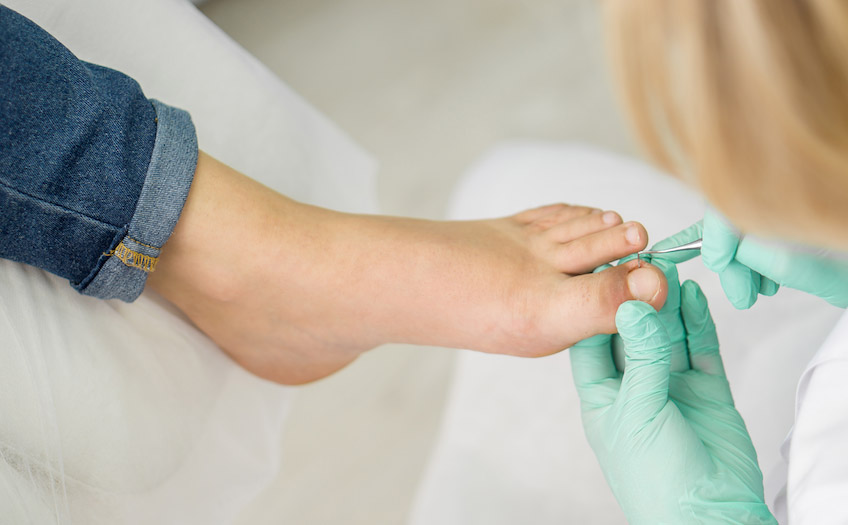What are ingrown toenails?
An ingrown toenail happens when the nail edge grows into the skin around it, which can cause pain, redness, swelling, and sometimes infection. This common foot problem usually affects the big toe and can usually be treated at home.
However, if left untreated, ingrown toenails can become increasingly painful and eventually lead to complications such as infections or abscesses. Those with diabetes or poor circulation are especially at risk for severe issues. Seeking professional treatment from Volunteer Podiatry can help alleviate pain, prevent infection, and ensure proper healing.
What are the symptoms of an ingrown toenail?
Ingrown toenail symptoms include:
- Pain and tenderness
- Inflamed skin
- Swelling
- Infection
What causes ingrown toenails?
Ingrown toenails can develop due to improper nail care, footwear choices, or underlying health conditions. Wearing tight or ill-fitting shoes that crowd the toes increases pressure on the nails, while cutting toenails too short, rounding the corners, or not trimming them straight across can encourage them to grow into the skin.
Adolescents are more prone to ingrown toenails due to increased perspiration, which softens the nail and surrounding skin. Factors such as a reduced ability to care for your nails, frequent toe injuries from activities like running or kicking, and medical conditions like diabetes that impair blood flow can also increase the risk.
How do you treat an ingrown toenail?
You can manage mild cases of an ingrown toenail at home, while treatment for more severe cases depends on their severity. However, if you experience severe pain, notice an infected toenail, or see the condition keep returning, you should seek professional care.
Mild cases may be managed at home by soaking the foot in warm water, keeping the area clean, and wearing comfortable shoes to reduce pressure. At Volunteer Podiatry, treatment options include safely trimming the ingrown portion of the nail, prescribing antibiotics for infection, or performing a minor procedure to remove part or all of the nail to prevent recurrence.
When is it time to see a podiatrist?
If you have severe pain, pus, or red, swollen skin that seems to be spreading, see a podiatrist. People with diabetes or poor circulation should get care right away for any foot sores or infections. Even small injuries like cuts, scrapes, corns, calluses, or ingrown toenails can get worse and cause serious problems. Poor blood flow and nerve damage caused by diabetes can prevent proper healing, increasing the risk of infection.
If you’re experiencing pain or recurring ingrown toenails, Volunteer Podiatry offers expert care to provide relief and prevent complications.

